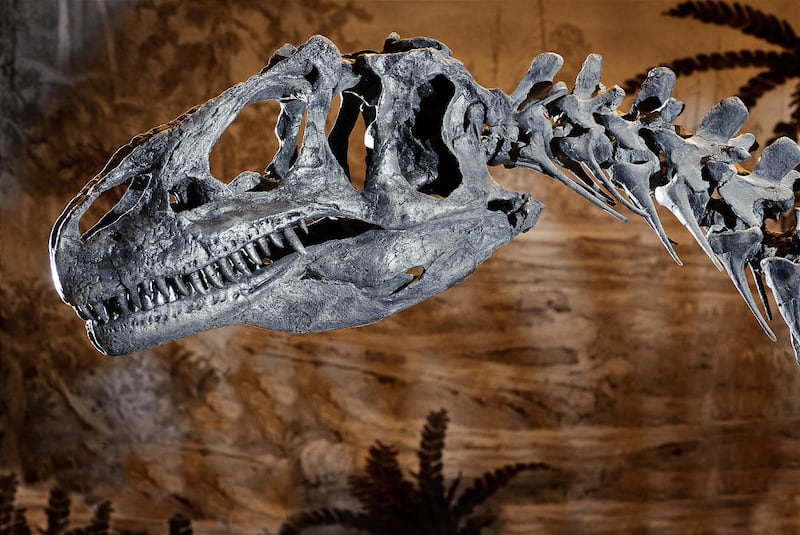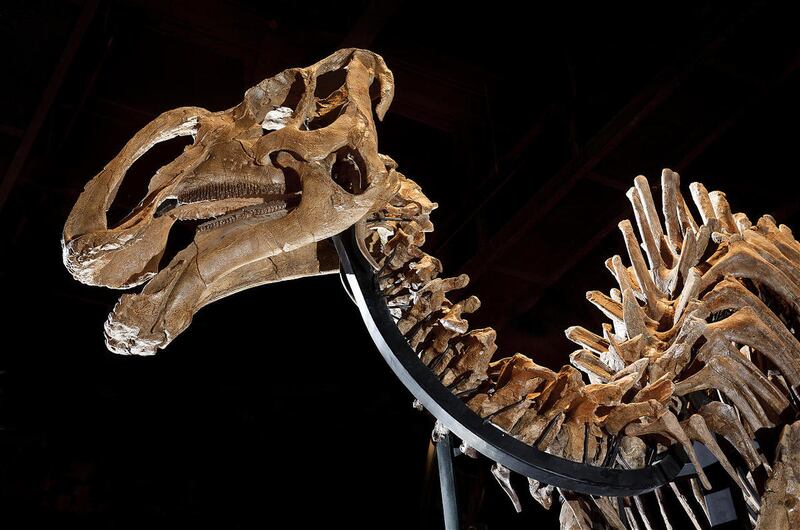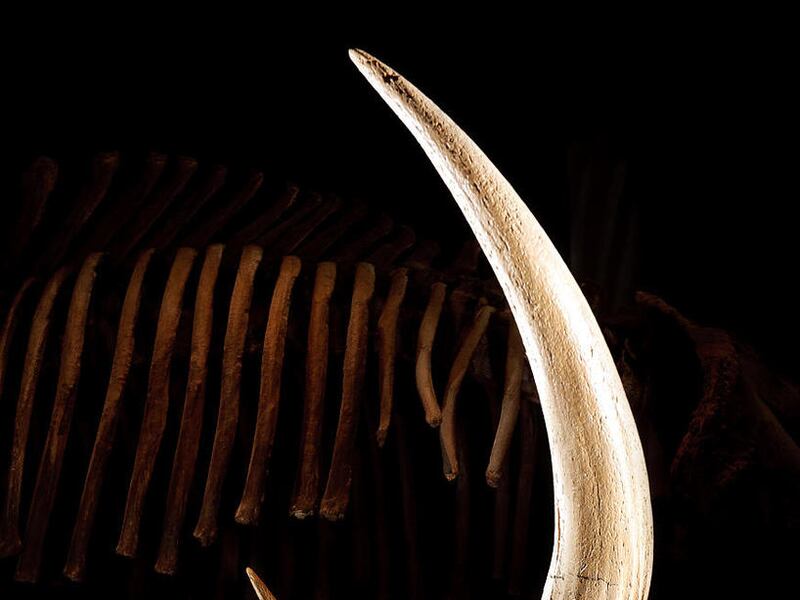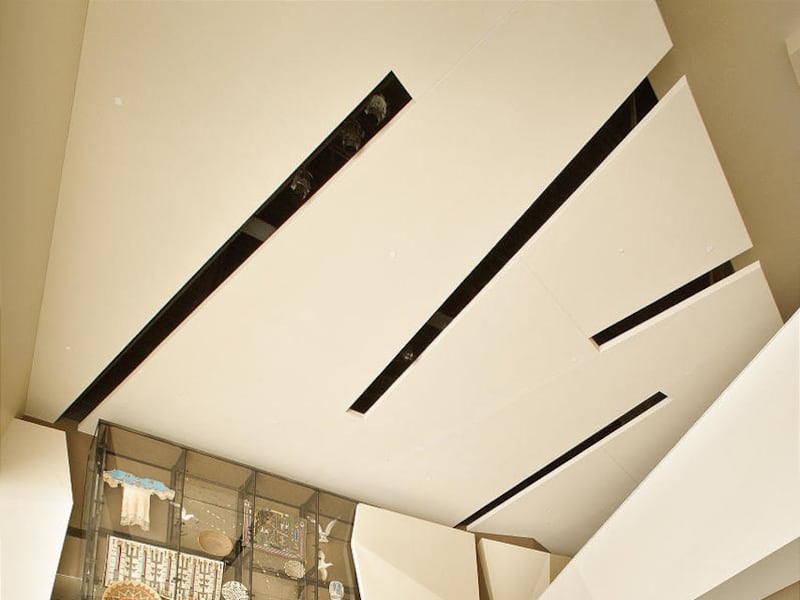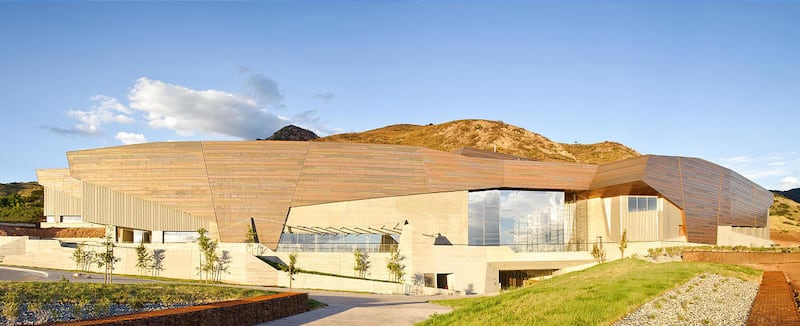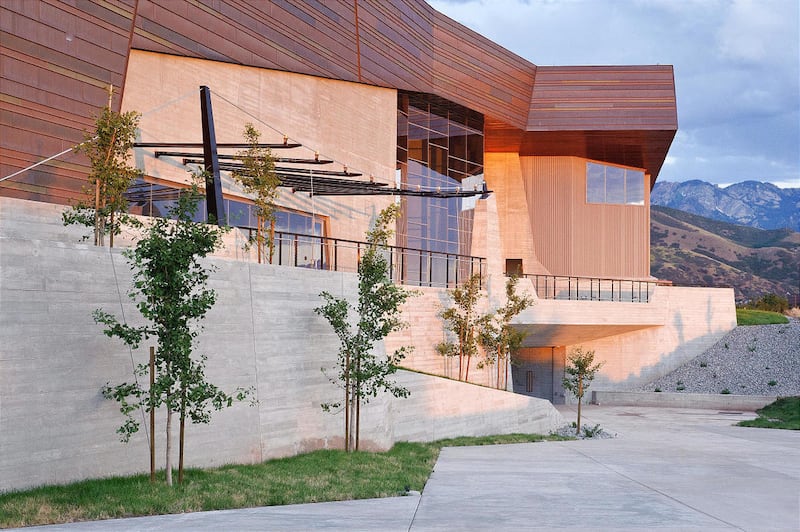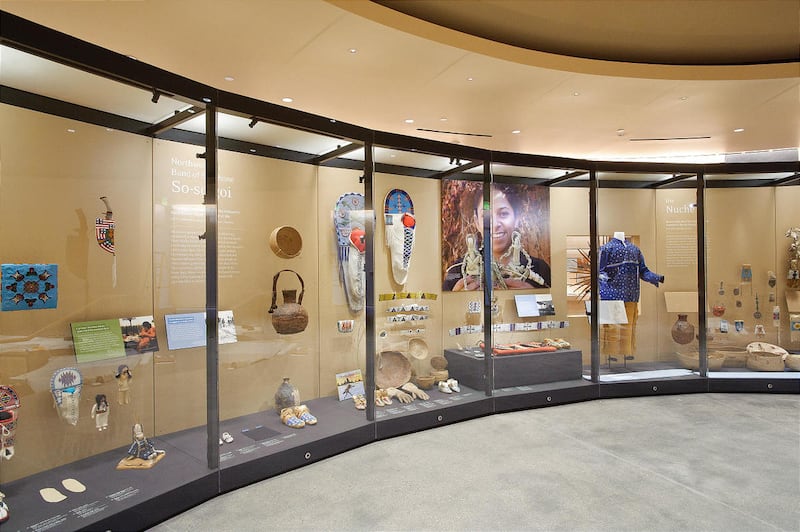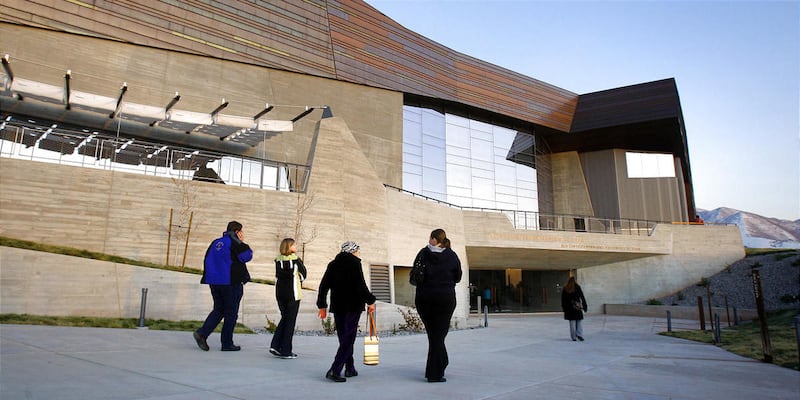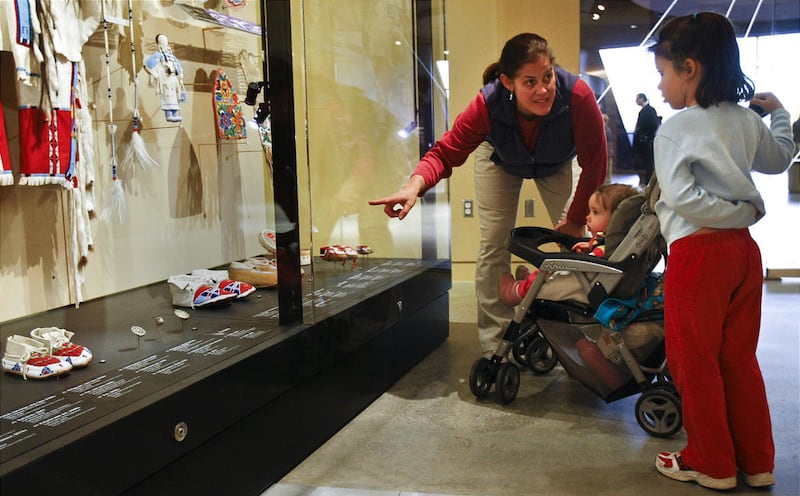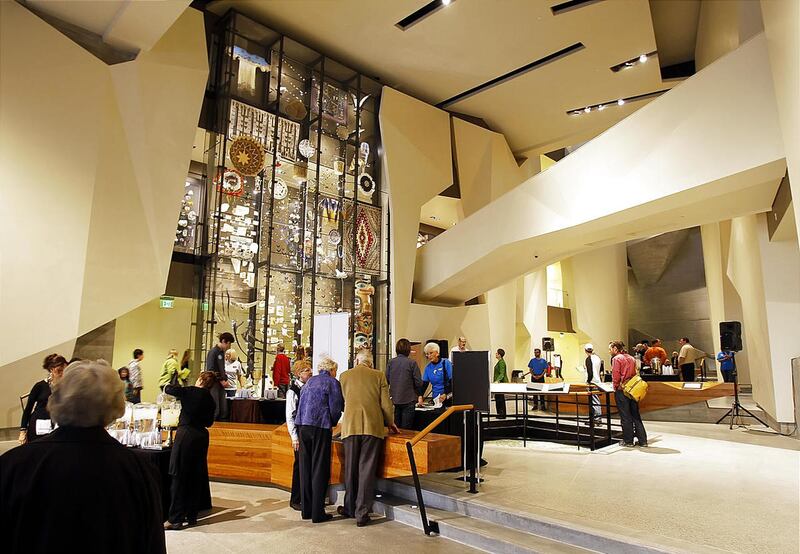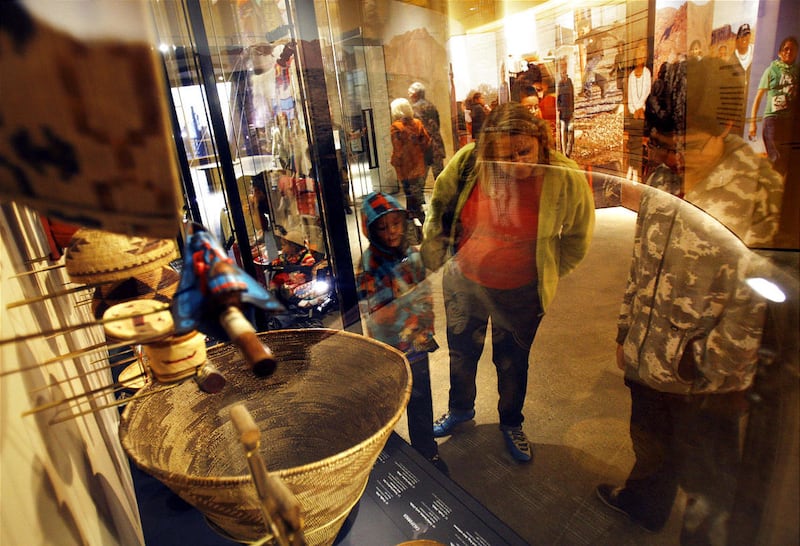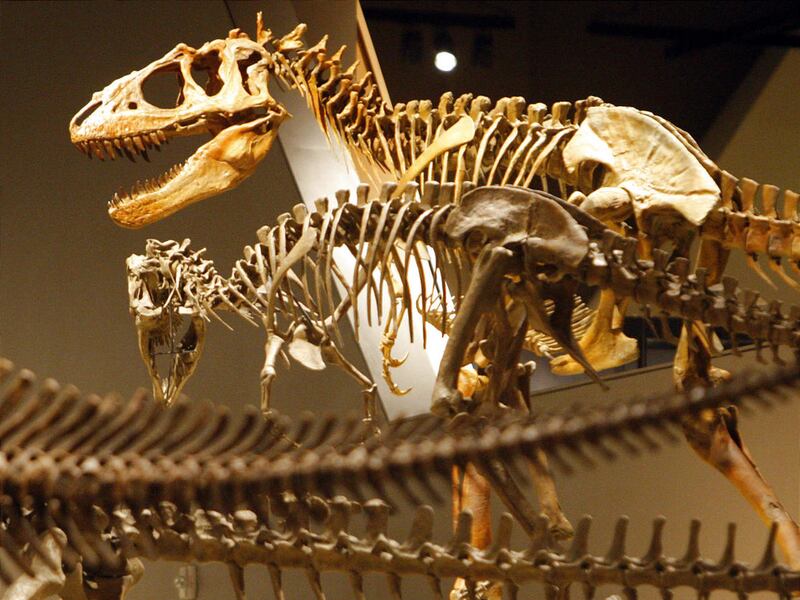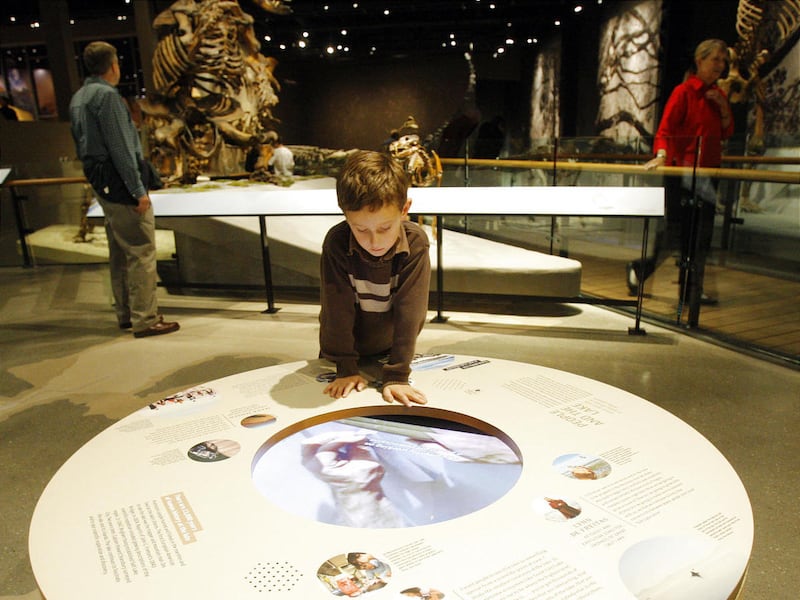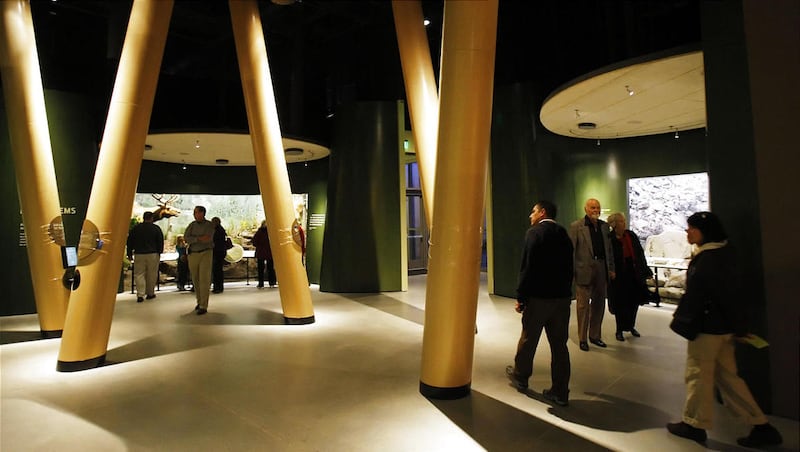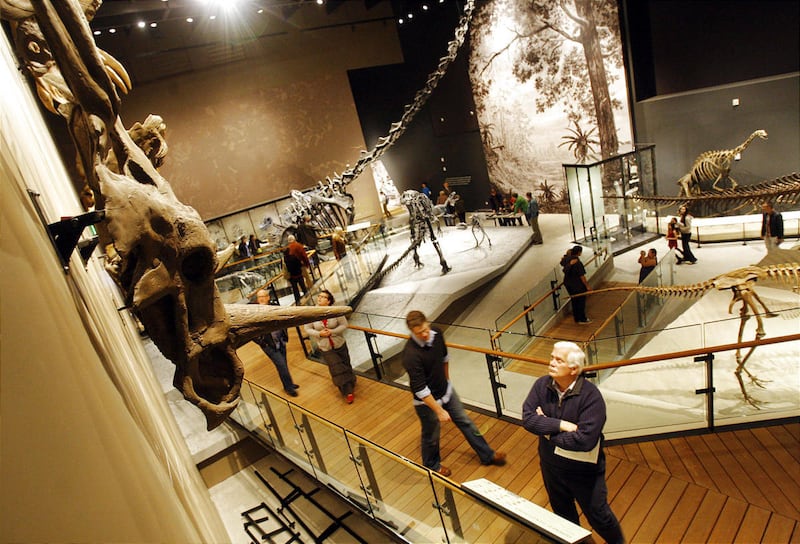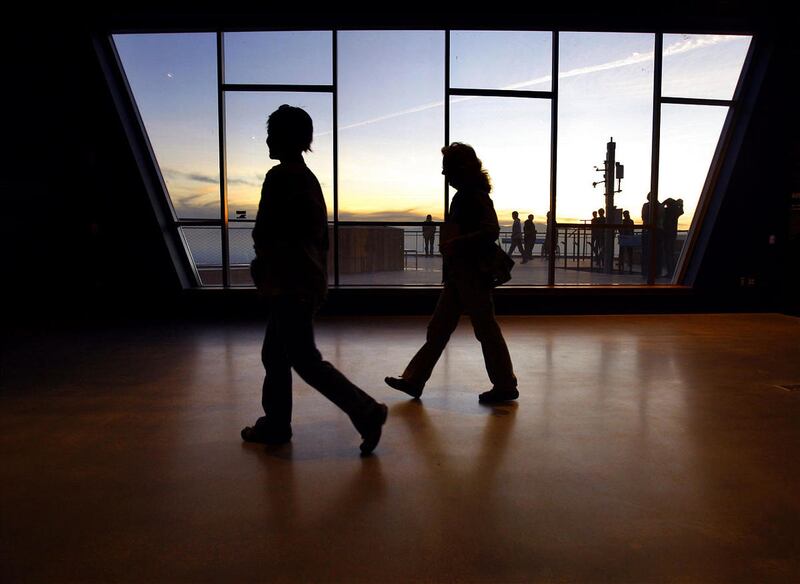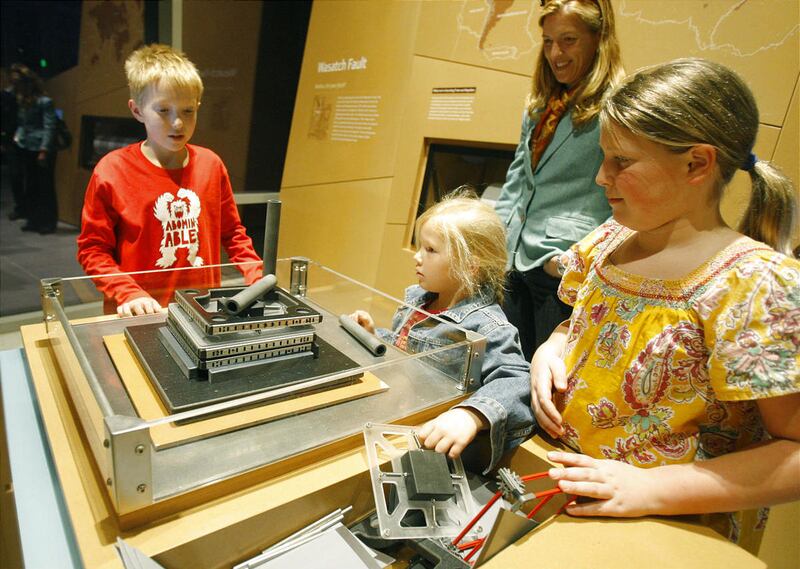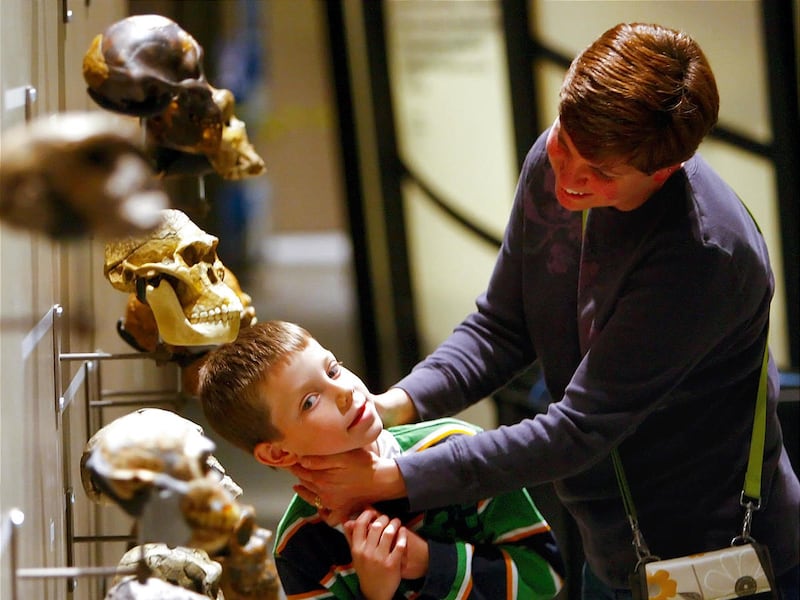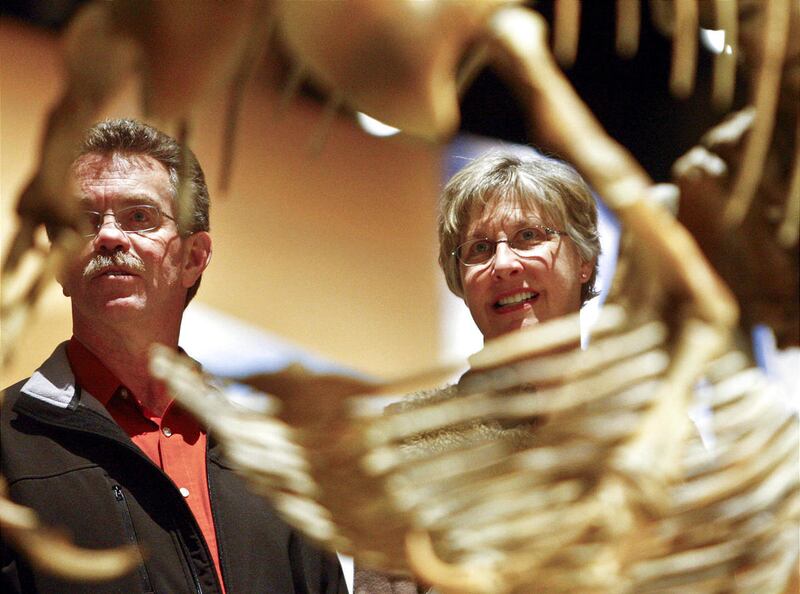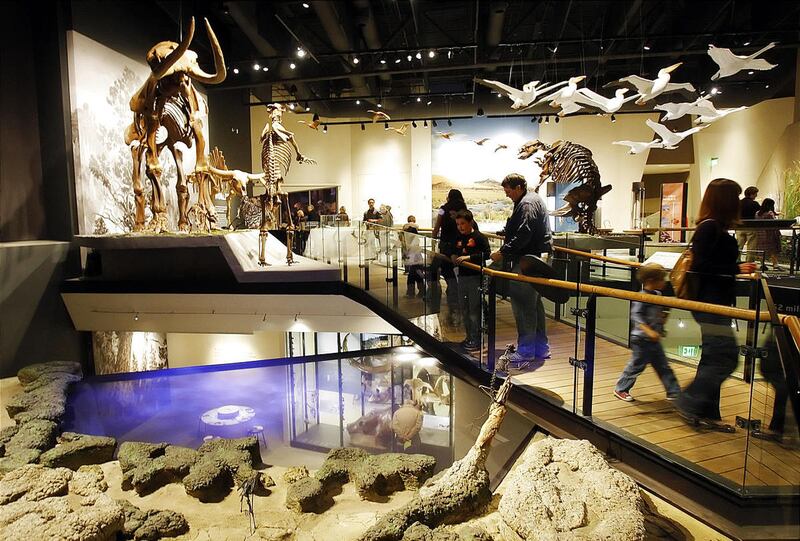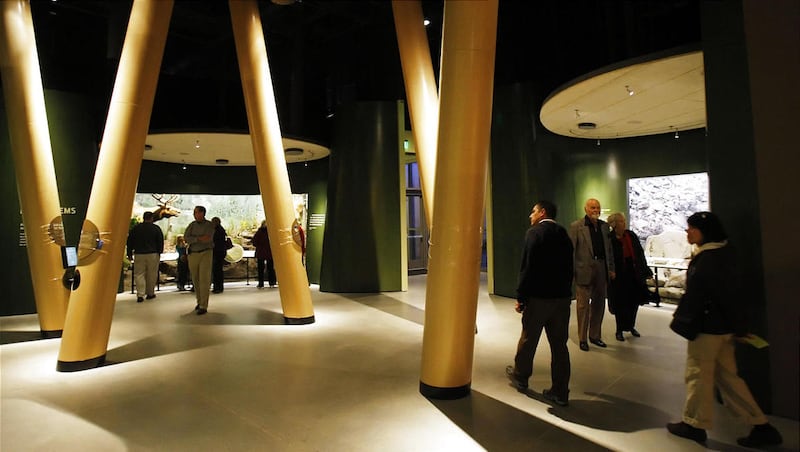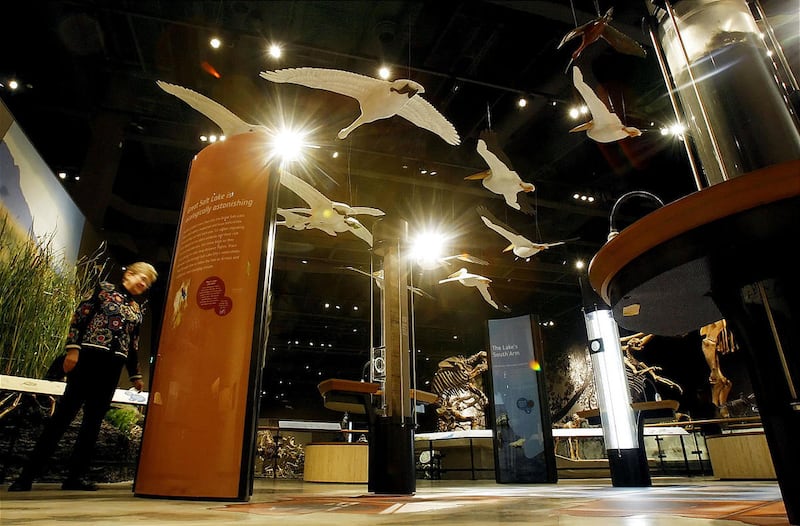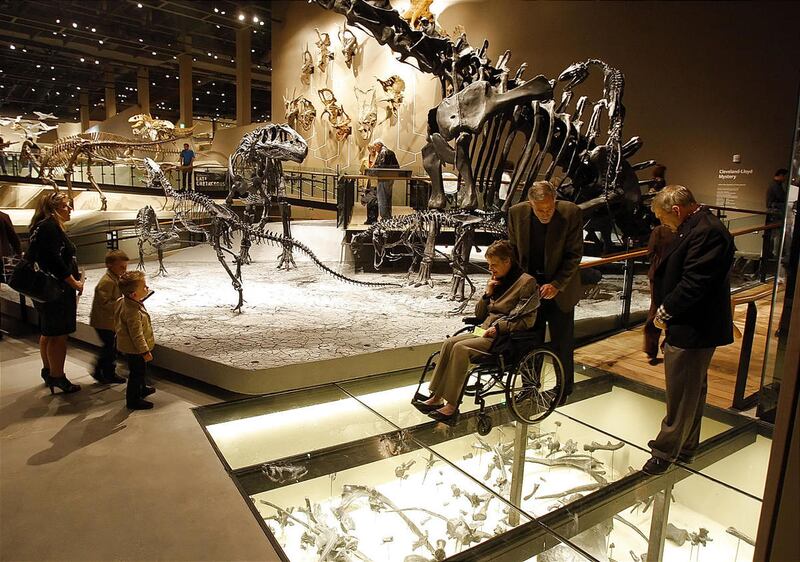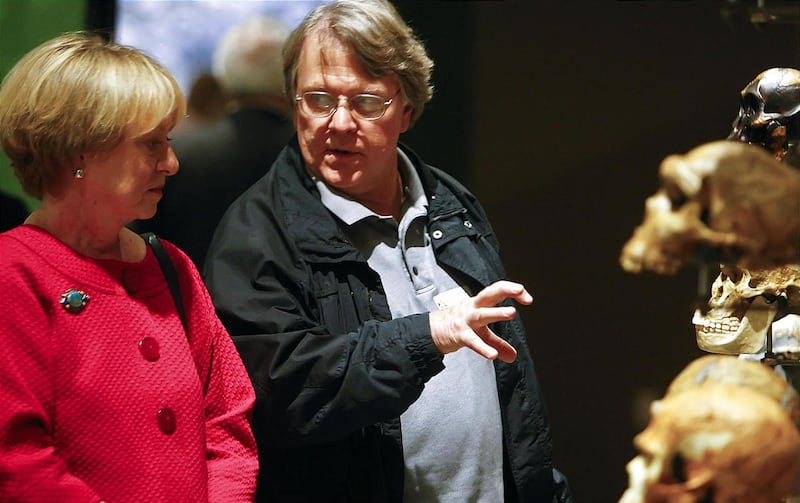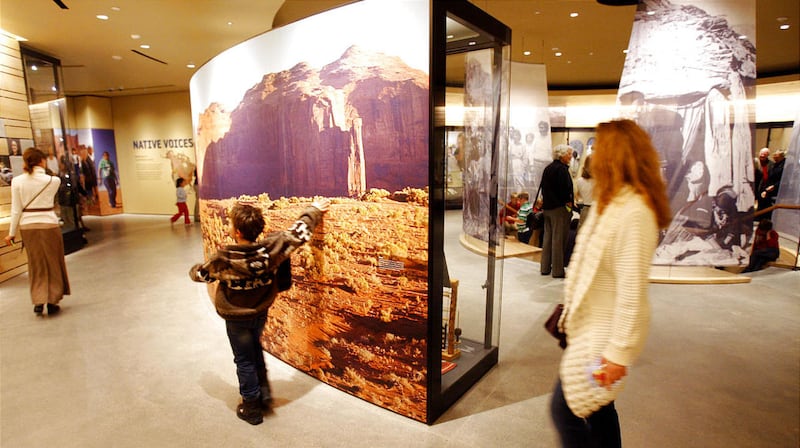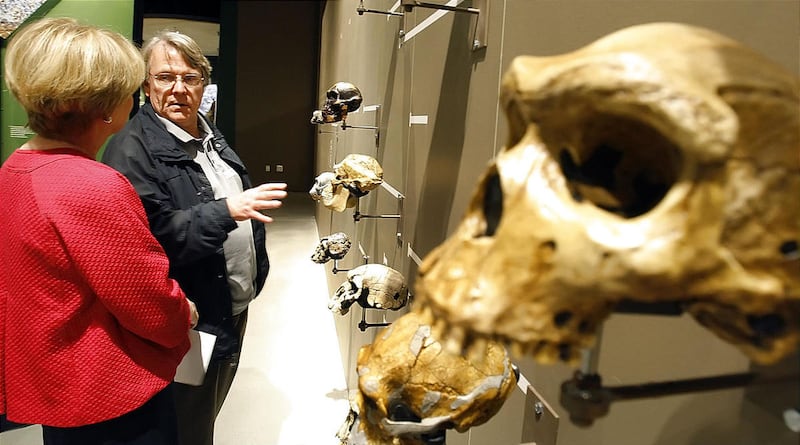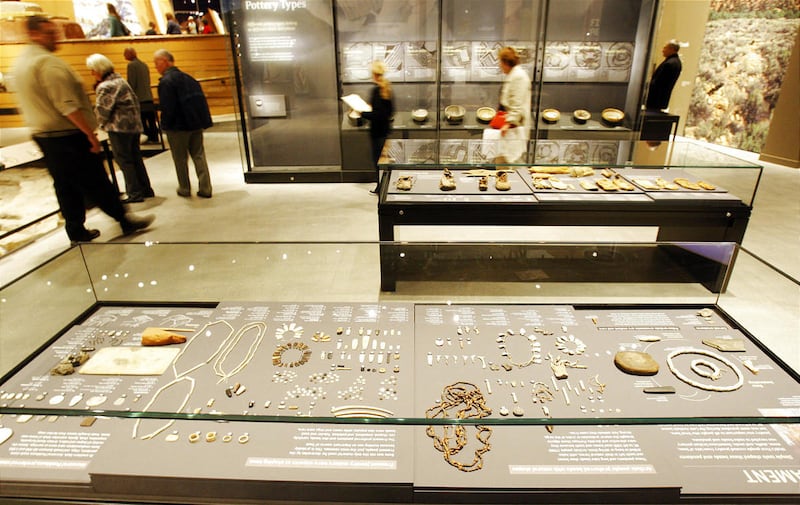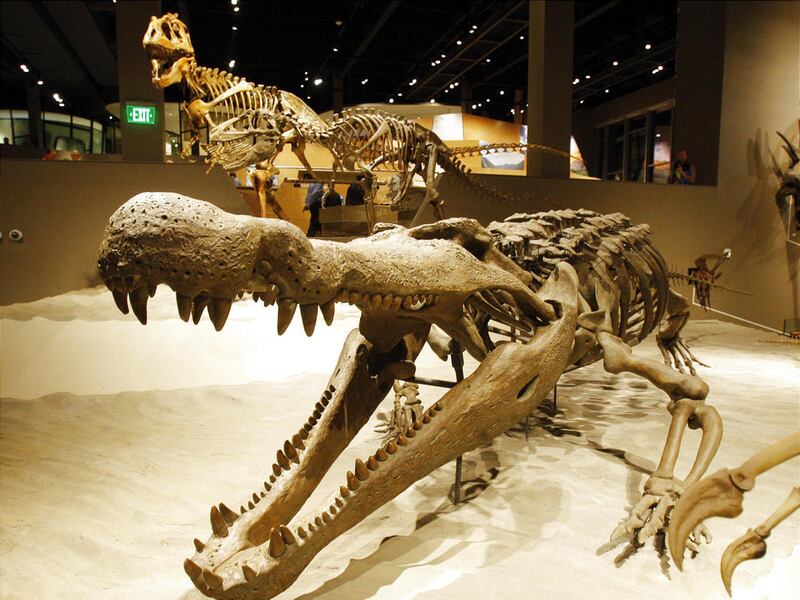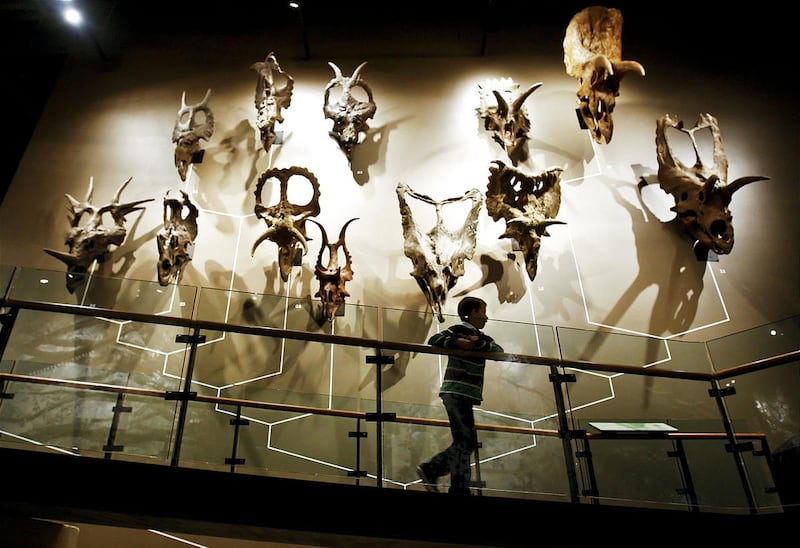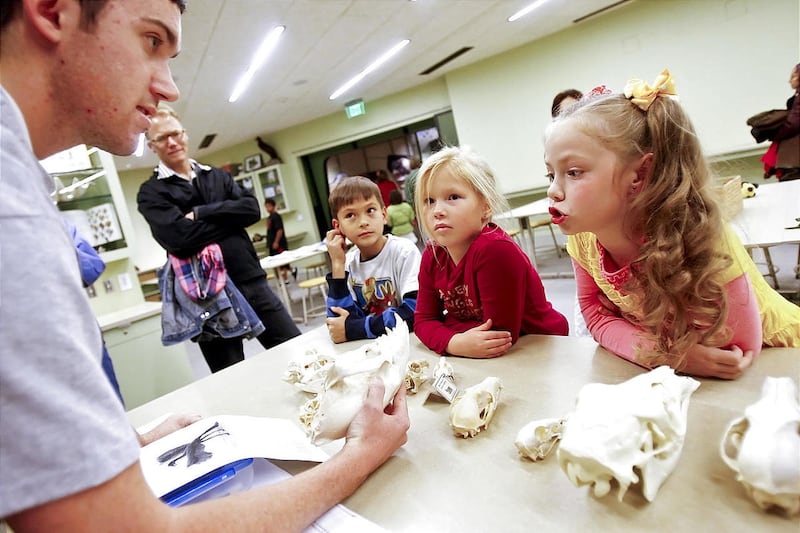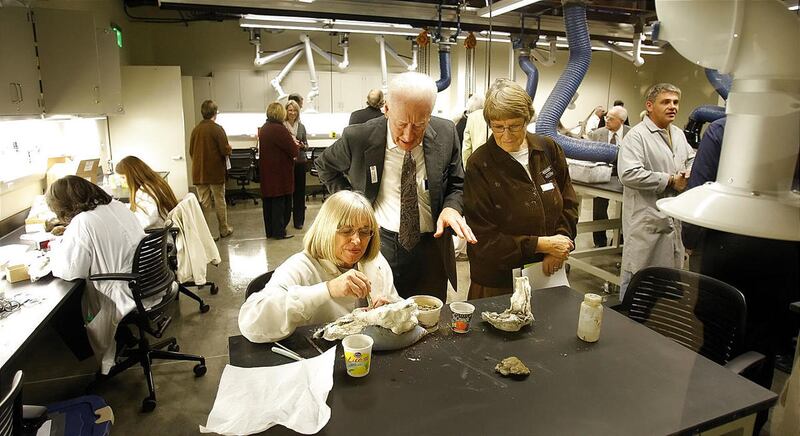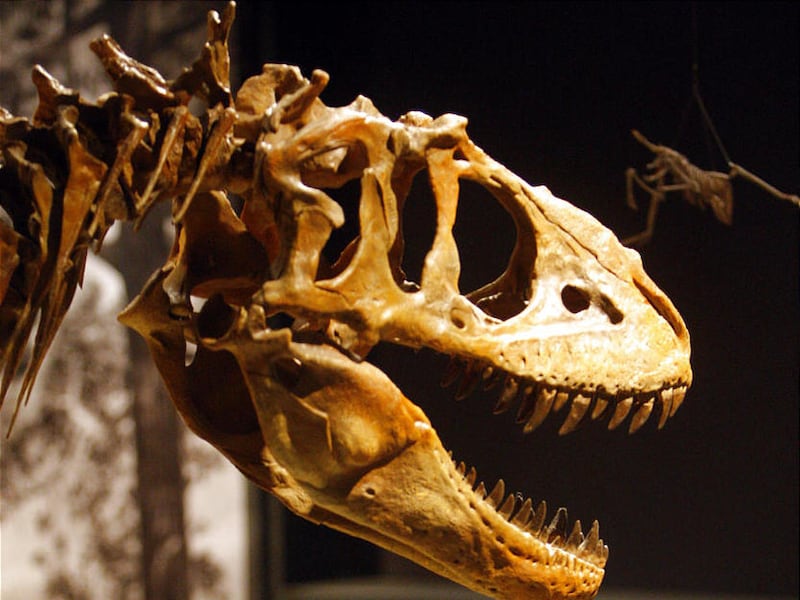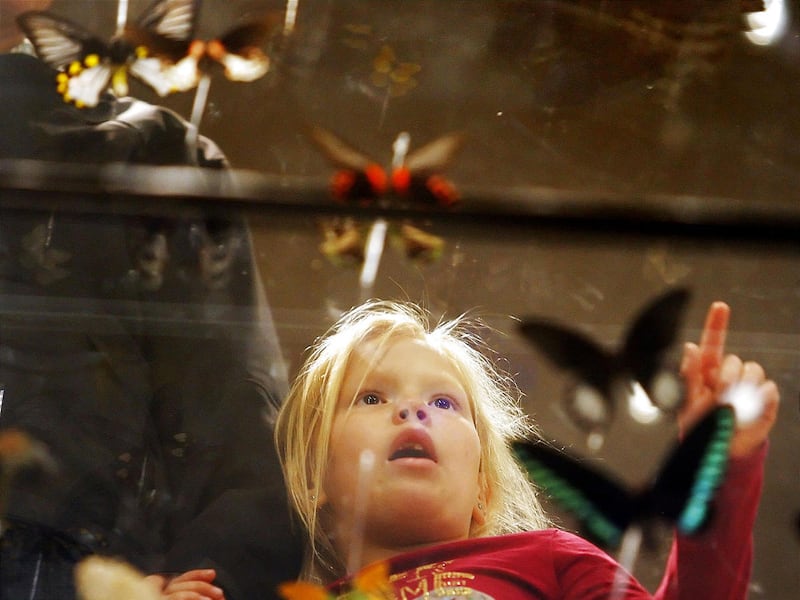The new building represents the rich and natural history of Utah. It's just incredible, and it's shown in the 10 different galleries."
What's been found in Utah over the years?
Dinosaurs, fossils and the famous lake stink.
These and other ancient and modern wonders of Utah will be spotlighted in the opening of the new Natural History Museum of Utah Rio Tinto Center located on the University of Utah campus.
The six-year project will open on Friday, Nov. 18, with free admission celebrating the grand opening.
"The new building represents the rich and natural history of Utah," Patti Carpenter, the museum's public relations director, said. "It's just incredible, and it's shown in the 10 different galleries."
The galleries, in a stair-step layout, aim to allow more immersion, interaction and learning. The museum houses 1.2 million objects from the state and region, including moccasins worn by Utah's first people, insect species and gems and minerals found in Utah and around the world. Although these are the same collections and artifacts from the old museum, the new Rio Tinto Center will evoke different experiences.
"The museum is filled with interactive exhibits — it's not just text on the wall and objects in the case," Sarah B. George, executive director of the museum, said. "You can build a pot, crank a pump and make the Salt Lake Valley fill with water, see where the shoreline of Lake Bonneville was and see a real time image of the sun as the day progresses. Just lots and lots of interactive programs."
The Great Salt Lake exhibit maps out the lake on the floor, showing how its shores have changed over the years. To highlight where the lake currently is, tiles with gel in them were used, so it looks to visitors like they are stepping on moving water.
At a preview for museum members on Thursday, Julie Fiscus, of Park City, said, "I think it's fantastic. I just can't keep my mouth together. (I'm) in awe …. I can hardly wait for our grandchildren to come."
Beth Chardack, of Salt Lake City, said, "It's gorgeous. They did a really nice job. It's so much bigger than the other museum. It's all state-of-the-art. It's beautiful."
Kelly Ladue, of Draper, said, "Love it! It's even better than I thought it was going to be … The interactive activities here are amazing."
The new galleries include the Utah Sky View Terrace, on the fourth level of the museum with an indoor-outdoor interpretive space, where George explained that three mountain ranges, weather and atmosphere could be seen. Other galleries in the museum include native voices, life, land, first peoples, lake (Great Salt Lake), past worlds, Utah futures and minerals.
For young visitors, there is Our Backyard Gallery, which includes a water table, real insects to look at, objects to touch and dress up.
The immersion does not only include visual and audio, but smell too.
"There is smell in some of the galleries where it is appropriate," George said. "For example, there is a little exhibit, 'What is the lake stink?' and you can push a button for the smell of the lake stink."
In addition to the new indoor galleries, the NHMU contains outdoor exhibits, including one visitors can walk through before entering the museum. George explained it as a walk through geological time, starting in the parking lot with the Big Bang and ending with the modern age at the entrance of the museum, equipped with steel metal exhibits.
Along with the new building, there are new programs such as architecture guides, new gallery activities and an archeological dig that consist of volunteers showing how archeologists do their work. These and other programs aim to have visitors engaged in what makes up Utah's natural history.
The Rio Tinto Center houses approximately 163,000 square feet and allows for 50 years of future collection growth. The green building, with more than 25 percent of the structure created from recycled resources, has features such as radiant heating and cooling and water-efficient landscaping. Within several years, the building aims to be awarded LEED Gold Certification and be a clean example to the community.
"We are headed for gold certification by installing solar panels on the roof, collecting the rain water from big cisterns, and all of the irrigation on the site is out of the cisterns," George said. "One of our goals is to be a demonstration site for sustainable choices."
The official opening date is Friday, 10 a.m. to 5 p.m. Advance reservations for free tickets are encouraged and are available on the NHMU website. On Thursday, the NHMU will hold a grand opening community gala at 7 p.m. to commemorate with the architects of the building and the museum curators. Tickets for the general public (ages 21 and older) are $45 per person.
For more information, visit umnh.utah.edu/home or the new museum webpage.
If you want to go …
What: Natural History Museum of Utah
Where: 301 Wakara Way, Salt Lake City, in University of Utah's Research Park, immediately south of Red Butte Garden.
Hours: Open daily from 10 a.m.-5 p.m., hours extended to 9 p.m. on Wednesday. Museum is closed on Thanksgiving and Christmas.
Price: adults: $9; seniors (65 and older): $7; youths (13-24): $7; children (3-12): $6; children 2 and under are free, along with museum charter members. Opening day will be free admission, and four free days are scheduled for 2012: Jan 9; April 9; July 9 and Sept. 22.

